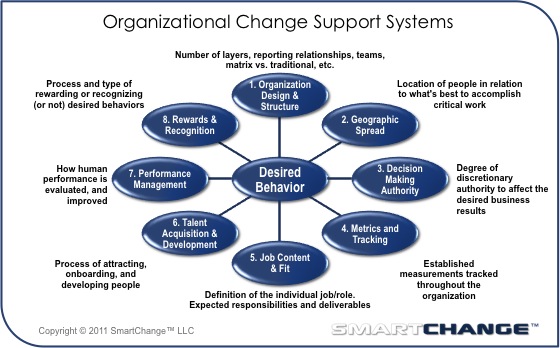This is the fourth post in the series “5 Reasons Why a Change Management Strategy Matters“
 A client once implemented a new operating and management philosophy across the entire organization. A team of dedicated experts spent months implementing the change, training the people, and basically refurbishing the entire facility. The results were impressive. At least initially. A few months after this effort, operational performance slid back almost to previous levels. This is not a unique story!
A client once implemented a new operating and management philosophy across the entire organization. A team of dedicated experts spent months implementing the change, training the people, and basically refurbishing the entire facility. The results were impressive. At least initially. A few months after this effort, operational performance slid back almost to previous levels. This is not a unique story!
Why does the change not last? Partly for the same reason that a father brings his wayward son back to counseling after a transformational improvement at an Anazasi camp, a wilderness survival camp for at-risk youth. The boy had come back transformed but the improvement didn’t last. Why? Because he came back to the same environment, the same friends, and the same family relationships. He had changed but the system had not.
For organizational change and business improvement to last, the system must change. Below are the eight critical systems in the SmartChange™ Methodology that collectively must support the change for improvement to be sustained.
In my experience the following three systems have the most significant impact in sustaining organizational improvement:
- Metrics & Tracking – What the organization measures and how. For instance, a sales organization adopts a new pricing strategy to maximize margins. But continuing to measure sales volume is inconsistent with the change. Why? Because measuring volume encourages discounts, rebates, and warranties, all of which erode margins. To create the right change and for it to last, you must measure the right things!
- Performance Management – How human performance is evaluated and improved. Performance management includes the ongoing manager-led discussions where the employee receives feedback, direction, praise, and ideas related to how the employee impacts the organization’s goals. It is during these discussions that change can be communicated, reinforced, and institutionalized. But it only works if it starts from the top and if the organization uses the right metrics as mentioned above. For change to last, it must be part of the ongoing performance dialogue!
- Rewards & Recognition – This system is closely related to the previous two and refers to the way certain behaviors get rewarded and/or recognized. I once worked with a client that wanted a culture of continuous improvement which requires a mindset of prevention. Yet, the common practice was to recognize and praise fire fighting and ‘heroes’ in times of crises. Clearly this informal reward mechanism was inconsistent with the desired change. For change to last, the right behaviors must be rewarded and recognized!
Like these support systems, there are other important and powerful change support systems that should be aligned to enable the right change to occur and to be sustained. The key question is how is each system either helping or hindering the desired change?
Only when these support systems are aligned with the desired change is significant business improvement likely to be sustained. A robust change management strategy addresses this work.

